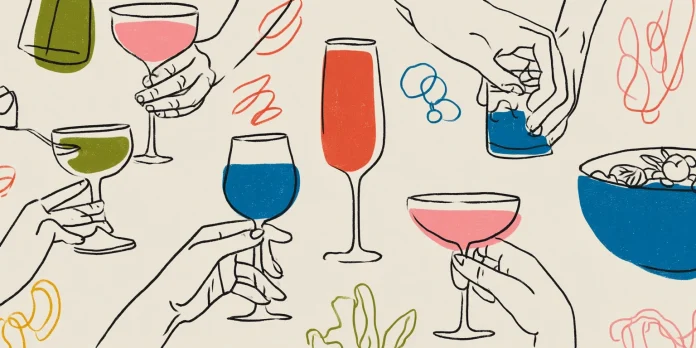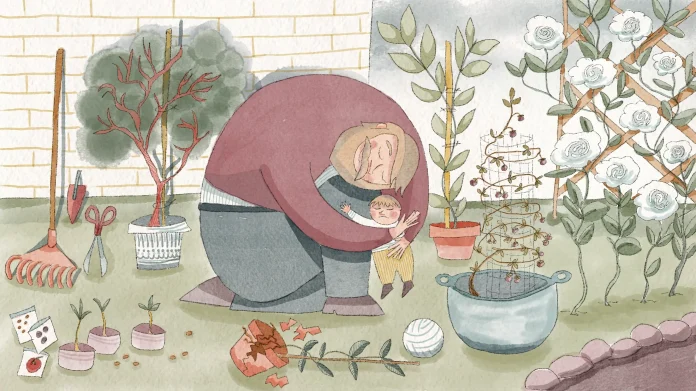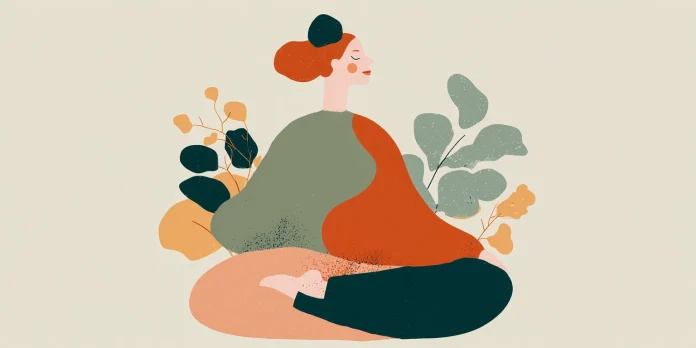Written by Malena Sanchez Moccero
Medically reviewed by Susana Pontiggia (Psychologist, Specialist in Neuroscience and Human Behavioral Sciences, Consultant in Personal and Organizational Development)
In an era where being busy is celebrated and constant productivity is the norm, the slow living movement offers a quieter, more intentional path. Could doing less actually help us live more? What does slow living look like in practice—and why is it resonating now more than ever?
Take it easy, take it easy
Don’t let the sound of your own wheels drive you crazy
Lighten up while you still can
Don’t even try to understand
Just find a place to make your stand
Take it easy
—The Eagles
A Culture of Hustle
We live in a time when hustle is worn like a badge of honor. Being busy is often equated with being important, and nearly every moment is expected to be productive. We glorify multitasking, track our steps, schedule our minutes, and respond instantly to notifications. Social media is filled with picture-perfect morning routines, non-stop career achievements, and carefully curated chaos. In this culture, slowing down, resting, or simply being present can feel almost revolutionary.
Within this context, the slow living movement has emerged as both a form of resistance and a source of refuge—a conscious decision not to let speed define the value of our lives. It invites us to pause, reflect, and reconnect with what truly matters.
What Is the Slow Living Movement?
The roots of the slow living movement lie in the Slow Food movement, which began in Italy during the 1980s as a counter-response to the rise of fast food culture. While Slow Food promoted traditional cooking, sustainability, and local ingredients, slow living took those values and expanded them to encompass all areas of life—work, relationships, technology, consumption, and even leisure.
At its core, slow living isn’t about doing everything slowly. It’s about doing things with greater intention and awareness. It means valuing quality over quantity, depth over breadth, and presence over performance.
Unlike minimalism, which focuses on reducing possessions, slow living is about transforming our relationship with time. It invites us to ask: What am I rushing toward? And what am I missing when I live in fast-forward?
Why the Urge to Slow Down?
The call for slowness is supported not just by intuition, but also by science. Research shows that chronic stress and time pressure are linked to anxiety, depression, insomnia, cardiovascular disease, and burnout. Constant stimulation and digital overload drain our attention spans and hinder deep thinking.
Slowing down helps counteract these effects. It improves emotional regulation, nurtures creativity, and strengthens social bonds. When we’re not constantly distracted or rushing from task to task, we’re more likely to experience joy, flow, and a deeper sense of meaning.
Wendy Parkins, co-author of Slow Living and a scholar in cultural studies, defines the movement as “the conscious negotiation of the different temporalities which make up our everyday lives, deriving from a commitment to occupy time more attentively.” In other words, slow living isn’t about escaping time—it’s about inhabiting it more fully.
What Slow Living Looks Like in Daily Life
You don’t need to quit your job, move to the countryside, or completely unplug from the modern world to embrace slow living. In fact, it often begins with small, intentional shifts:
- Start your day without screens: Begin your day gently. Wake up with intention. Avoid your phone for the first 30 minutes. Studies show that morning screen use can lead to procrastination and decreased productivity. Instead, sip tea, stretch, or journal.
- Cook and eat with intention: Prepare simple meals mindfully and eat without distractions. Research shows that people who cook at home more often have a significantly lower risk of mortality. Low cooking skills are associated with unhealthy eating patterns and being underweight. Mindful eating can improve both health and enjoyment.
- Take mindful breaks: Pause throughout the day—even for a minute—to breathe, take in your surroundings, or step outside. Micro-breaks have been shown to boost well-being and performance.
- Practice single-tasking: Focus on one task at a time. Quality rises when attention is undivided. Multitasking involves frequent task-switching, which increases cognitive load and leads to mental fatigue. Doing one thing well beats doing many things halfway.
- Say no more often: Protect your time and energy by turning down non-essential commitments. Overcommitting is a fast track to burnout. Saying “no” isn’t selfish—it’s a form of self-respect.
- Reclaim rituals: Turn daily routines—like making coffee or walking the dog—into grounding moments. Regular rituals are linked to lower anxiety and depression, helping us process emotions and reduce stress.
- Simplify your schedule: Don’t try to fit everything in. Leave space for rest and spontaneity. Leave room between tasks and meetings. Not everything has to be back-to-back.
- Connect offline: Prioritize in-person interactions without screens in the way.
- Tune into nature: Spend time outside, whether observing seasonal changes or simply feeling the breeze. A review on nature’s impact on the mental health of college students found that just 10 to 20 minutes outdoors significantly reduces stress and anxiety. Even five minutes outside can help.
- Be present with others: Put the phone away when someone’s talking. Listen fully.
- Reclaim ordinary moments: Find peace in the in-between—while cleaning, driving, or waiting.
- Embrace “enough”: Practice contentment with what you have instead of always striving for more.
- Reflect often: Journal or simply sit with your thoughts at the end of the day.
These simple practices might seem small, but together, they can shift your relationship with time. Rather than chasing it, you begin to truly live in it.
The Challenges of Going Slow
While the appeal of slow living is strong, actually practicing it can be difficult in a fast-paced, always-on world. Many people feel they simply can’t afford to slow down—financial constraints, family responsibilities, and demanding work schedules make the concept feel out of reach.
On top of that, Western culture often equates rest with laziness, and doing less with underachievement. These messages can lead to guilt or resistance when we try to embrace slower rhythms.
But slow living isn’t about being perfect or privileged. It doesn’t have to be an all-or-nothing commitment. Even brief pauses—a deep breath, a mindful walk, a quiet meal—can start to change how we relate to time. The goal isn’t perfection; it’s consistency.
Why Slow Living Resonates Today
A number of recent cultural and global shifts have brought new attention to slow living:
- The COVID-19 pandemic disrupted daily routines and forced many to slow down. While challenging, it revealed how much of modern life runs on habit and inertia rather than intention.
- Burnout and rising mental health awareness—especially among younger generations—are prompting deeper questions about how we live and work.
- Climate anxiety is pushing people toward simpler, more sustainable lifestyles, often aligned with the values of slow living.
- The rise of digital fatigue has made screen-free moments feel luxurious, increasing the desire for more embodied, analog experiences.
For many, slow living isn’t just a lifestyle—it’s a quiet form of resistance. By valuing rest, care, and connection over output and speed, it challenges systems that treat efficiency as the ultimate goal.
Taking the First Step
Slow living isn’t a destination. It’s a practice—rooted in curiosity and self-awareness. You don’t need to get it “right.” In fact, trying to perfect it misses the point entirely.
Instead, begin by asking yourself a few honest questions: Where in my life do I feel rushed or disconnected? What do I long for more of? Where can I create even just a little more space?
From there, let slow living be an invitation—not to do everything more slowly, but to live more deeply. And as Cat Stevens sings to his son: Just relax, take it easy.





